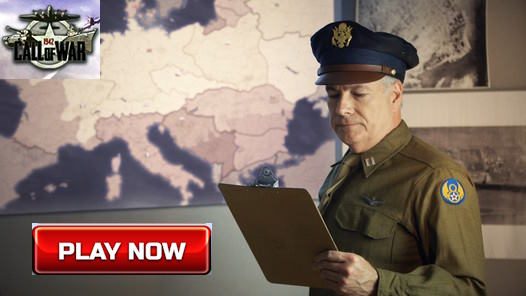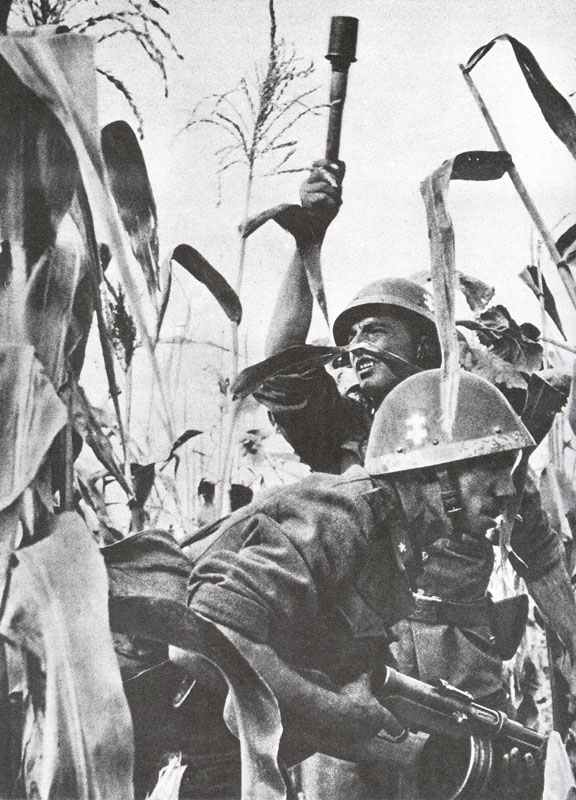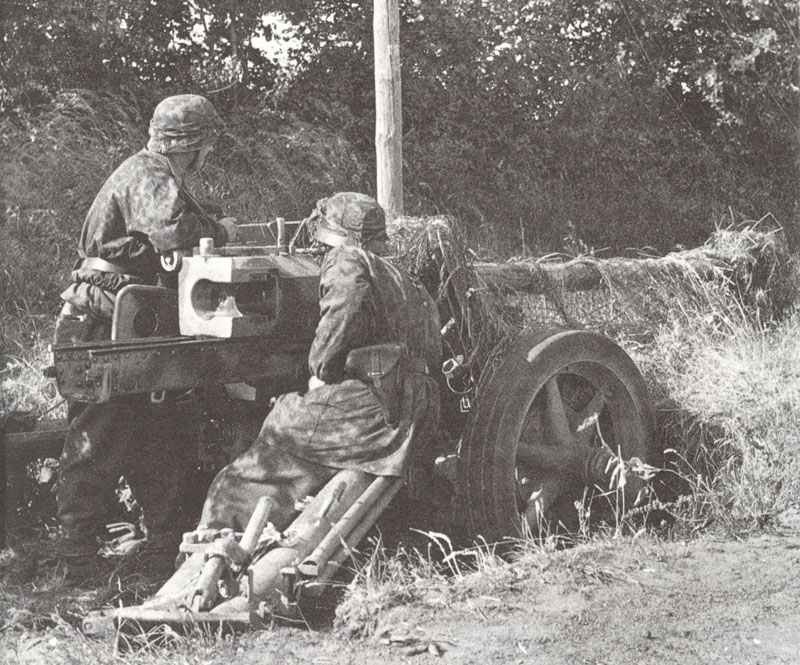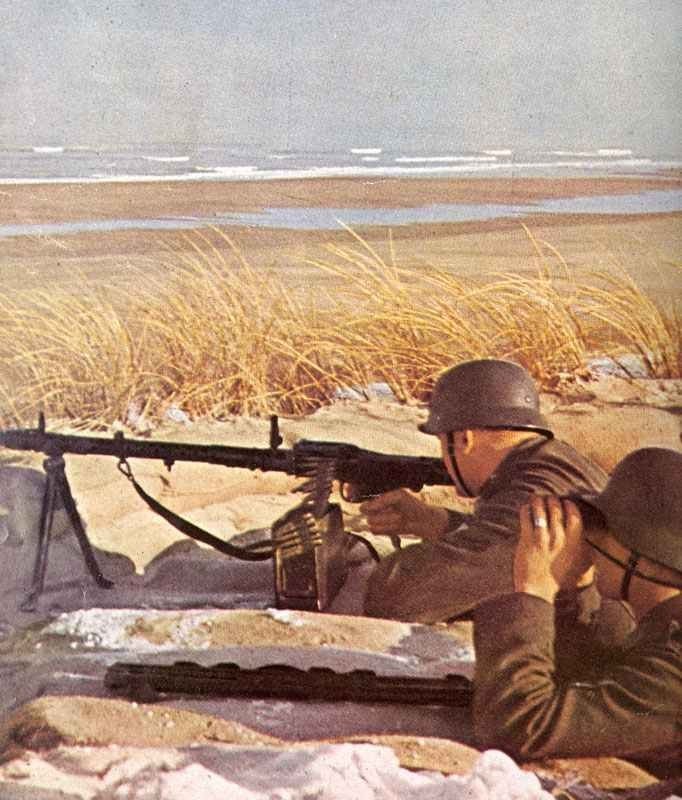German self-loading rifle Gewehr 43 and predecessor G-41 of the Second World War.
History, development, service, specifications and pictures.
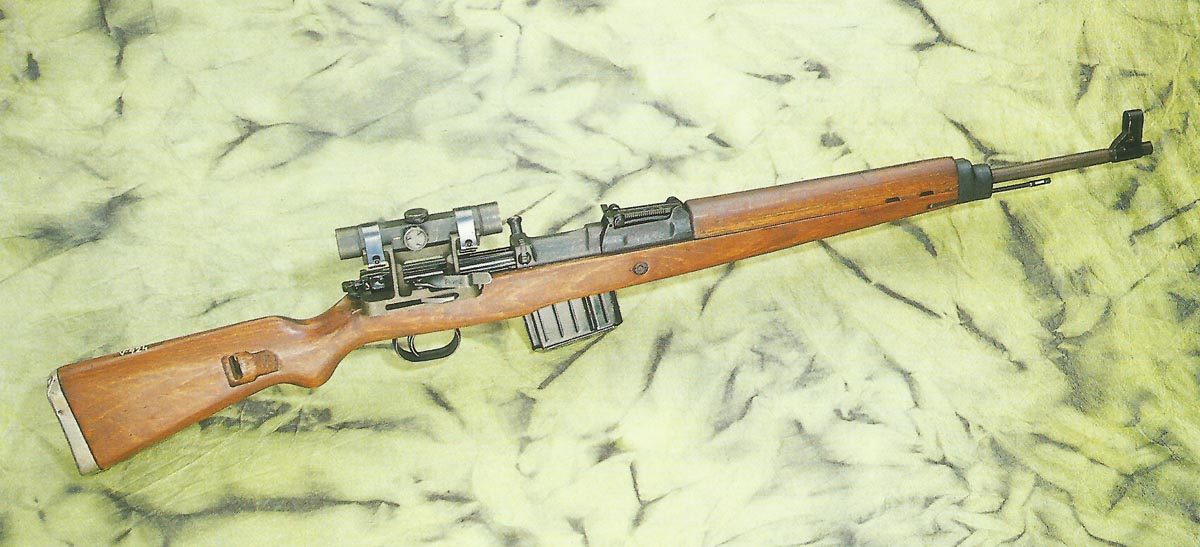
Self-loading rifle 43 (Md 43, G-43), Md 41 M, Md 41 W
Type: semi-automatic infantry rifle and sniper rifle.
Gewehr (rifle) 41
Table of Contents
Already around the turn of the 19th to the 20th century numerous designs of automatic rifles were produced in Germany and one or two models were actually built. But it took until 1937, when the German army finally started to think about replacing the cylinder lock rifle Mauser 98 (Kar 98k) with a self-loading rifle.
The introduction of the M1 Garand self-loading rifle in the US Army in 1936 probably played a role in this, and the German ‘quality control’ department was always intent on increasing the efficiency of the Wehrmacht.
However, the first attempts were not successful and so it took until 1940 for the competing companies Mauser and Walther to bid for a production order with their models according to Wehrmacht specifications.
The results were the self-loading rifles Md 41 M (Mauser) and Md 41 W (Walter), or Gewehr 41 (G-41 M or G-41 W). ‘Md’ stands for ‘model’ and ‘Gewehr’ is the German term for rifle.
Both weapons were quite similar due to the exact specifications and used an unusual system to fire the 7.92 mm standard cartridge. It was the ‘Bang’ system, named after its Danish inventor. The powder gases were collected at the barrel muzzle and actuated with the help of a recoil amplifier and a gas piston at the barrel of the breech.
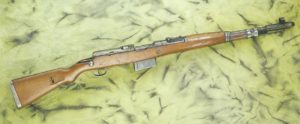
Although the weapon worked well in theory, as one could expect from Mauser, Walther’s model was determined to be better suited after army tests.
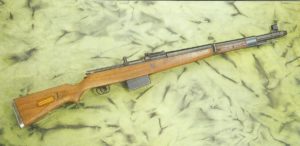
The Walther version was easier to produce, cheaper and much better suited for the hard service at the front and so the G-41 (W) was preferred.
A series of 3,400 units was sent to the Eastern Front at the end of 1941 for troop testing.
Although the Gewehr 41 (W) worked, it did not become very popular. The design of the muzzle led to constant pollution and therefore a continuous and careful care of the rifle was necessary.
In addition, the rifle was badly balanced with a too strong weight at the muzzle, which made it difficult to handle. And if that wasn’t enough, it was extremely heavy for an infantry rifle.
To complete the negative list, both models from Walther and Mauser had a built-in magazine for 10 cartridges of the 7.92 mm standard ammunition, which could only be loaded very slowly and laboriously.
Nevertheless, in 1943 several tens of thousands of rifles were built in Walther’s Berlin-Luebecker Maschinenfabrik. The rifle remained in use mainly on the Eastern front until the end of the war, but was not popular with the soldiers and was often exchanged for a better rifle.
Gewehr (rifle) 43
After the start of Operation Barbarossa, German soldiers met the Russian semi-automatic Tokarev rifle. It was far from perfect, but still clearly superior to the Gewehr 41. In addition, the troop trials with the rifles Md 41 (M) and (W) showed early the weak points, which had to be improved.
The locking system of the Gewehr 41 was satisfactory, but the weight was too much and the muzzle area was considered a ‘built-in automatic blocking system’.
So in 1942 Walther delivered another rifle for troop testing, which was later called Gewehr 43. With this rifle the gas was already taken out in the first third of the barrel and directed upwards into a gas channel. Around this channel was a plate-like bulrush, which moved a rod, which activated a bolt carrier above the chamber; an almost identical system as with the Russian Tokarev rifle.
The locking system was the same as the swing flaps used on the G41 (W), which were controlled by the movement of the firing pin assembly, which in turn was triggered by the bolt.
The whole weapon was much lighter and better balanced than its predecessor. In addition, the permanently installed cartridge magazine was replaced by a plug gable box magazine, which improved fire speed and reloading times. The rifle 43 was designed from the beginning for easy and fast production.
Although the rifle 43 was not taken over as an official standard weapon in the Wehrmacht, but due to the simple and fast production it was easy to build the rifle from 1943 to the end of the war in 1945 in mass production at the company Walther and various other manufacturers according to an instruction of Hitler.
Thus, a total of about 450,000 pieces of the rifle 1943 were delivered to the German army.

The G43 was widely used on the Eastern Front from 1943 and in much smaller quantities on the other fronts.
From 1944 the production was further simplified by doing without the high quality solid wood, which made the weapon look worse on the outside. The latest versions had various tool markings and used plywood laminates or phonological plastic compounds.
So in 1944 another, even more simplified design appeared, which was introduced as Karabiner 43. Although called as a carbine, this weapon was only about 50 mm (c.2in) shorter.
Nevertheless, the quality of the mechanical components was always of a good standard and the rifle had an excellent reputation for accuracy and reliability. It remained in production until the end of the war and was later adopted by the Czech army as its standard sniper rifle, which is a compliment to the considerable firearms’ expertise of the Czechs.
The rifle 43 and its predecessor G 41 used the German 7.92 mm standard cartridge and were not affected by the introduction of the short cartridge for the assault rifle StG 44.
Users: German Wehrmacht.
Specifications Gewehr 43 and 41
Specifications:
| Specification | G-41 (M) | G-41 (W) | G-43 |
|---|---|---|---|
| Type | self-loading rifle | ||
| Caliber | 7.92 mm (standard cartridge) | ||
| Length | 45.9in (117.40cm) | 44.5in (113.80cm) | 44.0in (111.50cm) |
| Gewicht | 10.4lb (4.7kg) | 11.0lb (4.87kg; 5.03kg loaded) | 9lb 9oz (4.27kg; 4.4kg loaded) |
| Barrel | ? | 21.5in (54.60cm), 4 grooves, right hand twist | 22in (54.90cm), 4 grooves, right hand twist |
| Feed system | 10-round integral box magazine | = | 10-rounf detachable box magazine |
| System of Operation | Gas | Gas; locking flaps | Gas, locking flaps |
| Muzzle velocity | ? | 2,550 feet/sec (776m/s) | 2,450 feet/sec |
Service statistics:
| Figures | G-41 (M) | G-41 (W) | G-43 |
|---|---|---|---|
| Manufactures | Mauser | Carl Walther Waffenfabrik, Zella-Mehlis (Thuringia) | Carl Walther Waffenfabrik, Berlin-Lübecker Maschinenfabrik AG, Lübeck Gustloffwerke at Suhl |
| Production delivery | 1941 | 1941 | 1942 |
| Troop trials | 1941 | late 1941 | |
| Service delivery | - | mainly 1943 | 1943 |
| Final delivery | 1941-42 | 1943 | 1945 |
| Production figure | 17,000-20,000 | 3,400 for troop trials; several tens of thousands mainly 1943 | c.450,000 |
| Price per unit | unknown |
References and literature
The Encyclopedia of Infantry Weapons of World War II (Ian V.Hogg)
Infanterie im 2. Weltkrieg (J.B.King, John Batchelor)
Illustriertes Lexikon der Waffen im 1. und 2. Weltkrieg (V. Dolinek, V. Francev, J. Sach)
The Encyclopedia of Weapons of World War II (Chris Bishop)



